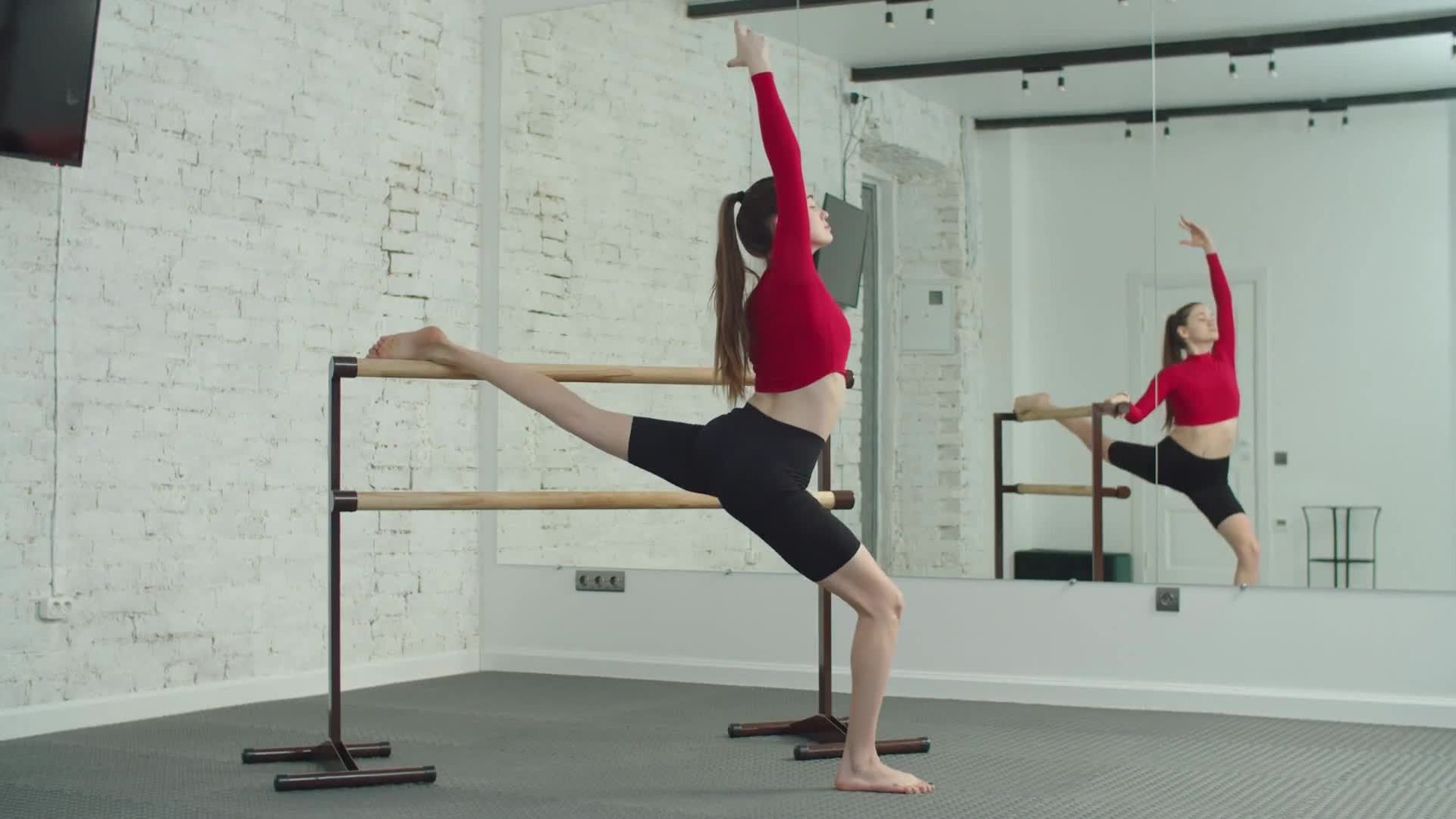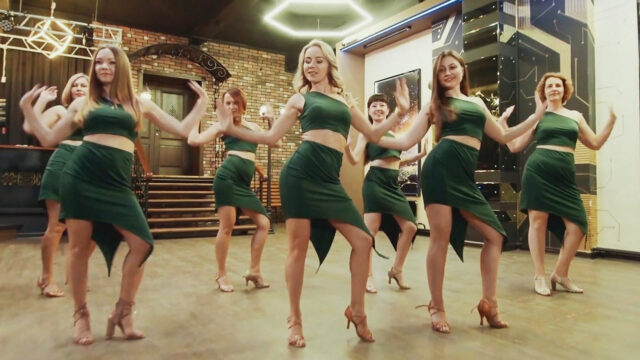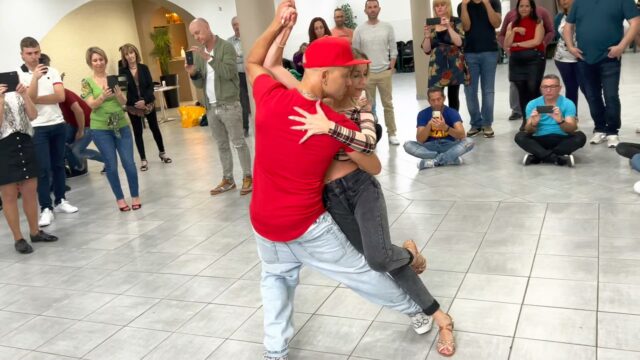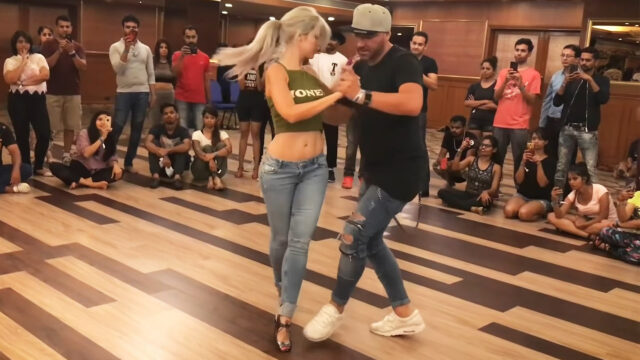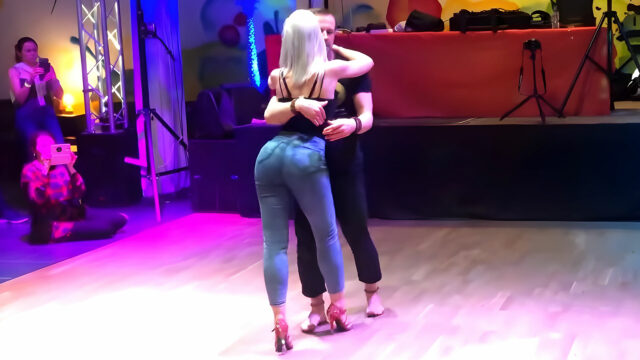Dancing is a universal form of human self-expression. We start dancing when we are babies and, hopefully, never stop dancing. You can dance without any training and you can dance with just yourself and the beat of the music. With that being said, being taught how to dance in a specific style is so rewarding and you may need to think about getting some dance equipment to help you along your way. Some equipment can help you with all forms of dance but there is also equipment that is specific to certain dance styles. Read on for our handy guide to all the dance equipment you will need.
Quick jump to dance equipment for: Flexibility | Strength | Recovery | Home Dance Studio | Ballet | Tap Dancing | Acro Dance | Pole Dancing | Aerial Silk
Related articles: Dance Accessories for Classes & Competitions
Please note, that DanceLifeMap is reader-supported and as Amazon associates we earn from qualifying purchases. When you buy products using our links, we may earn commissions from some of the retailers while you pay the same. Now that everything is as transparent as it can be, let’s continue!
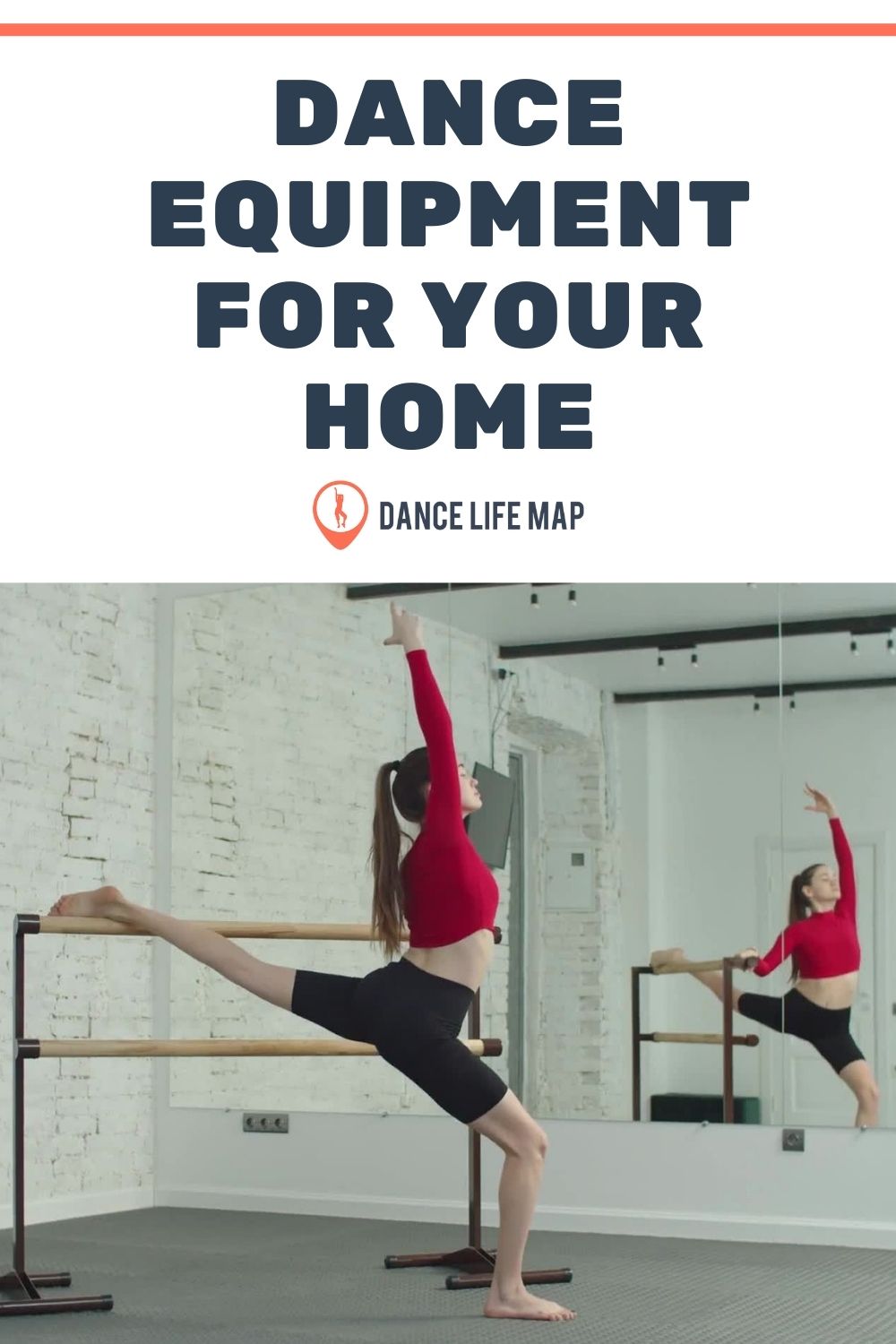
Dance equipment for fitness
Dancing to a high level requires you to be very fit. In fact, a study has found that ballet dancers are in better shape than international competitive swimmers. And reaching that level of fitness requires a lot of intense training in the studio, but also a lot of practice and training in your own time. Speeding up recovery between training sessions can be key to making sure that you stay on top of your game.
So what are the important areas of fitness that you should be focusing on with dancing? Just about everything, really. To dance, you need to be flexible and strong, definitely. But you also need to have a high level of cardiovascular fitness because dance requires you to move constantly (one of the reasons why it’s so good for fitness).
Dance equipment for flexibility
Keeping your flexibility up is so important for dancing, especially with dance styles like ballet, jazz, modern, contemporary, acro dance, pole dancing, etc. But flexibility can be lost so quickly if you don’t keep up with your training. In fact, you should really be training your flexibility every single day. Let’s take a look at some of the equipment that can help you stay flexible at home.
Flexibility bands
These resistance bands from La Esmeralda are specifically designed for dancers and gymnasts. They are made of premium-grade rubber and are thicker than most bands, which gives them extra resistance. They can help you to increase the flexibility in your back, legs, and hips. And they come with a useful stretch guide to help you learn how to do the stretches properly.
Flexibility bands can be a great way of giving your flexibility a boost in the shortest possible time. You will need to use just enough tension to deepen your stretch, without taking it too far.
These bands are:
- 0.10 inches thick
- 1.5 inches wide
- 90 inches in circumference
- 60 inches in length
They also come with a handy carry bag so that you can take your bands wherever you need to do your stretches. Whatever level of dance training you are in, be it beginner, intermediate, or professional, these flexibility bands can help you to improve your flexibility and boost your dance skills.
Overdoor flexibility stretcher
This flexibility band is different from the ones that you use on the floor. It focuses on improving your leg flexibility but in a standing position. You don’t need to drill any holes and the strap won’t damage your door. All you have to do is:
- feed the strap through the ring
- place the door anchor over the top of the door and then close the door
- place your foot in the adjustable end loop and secure it
- stand with your back against the door and standing leg straight
- then slowly pull your foot up and hold for 15-45 seconds before releasing it
- repeat on both sides as many times as you like
You can see how this type of flexibility strength is ideal for dancers who want to improve their leg flexibility because it mimics the sorts of leg raises that you would need to do when you dance.
This pack also comes with a travel flexibility strap. This isn’t an over-the-door strap but is used on the floor. And it also comes with a stretch guide to help you perfect your stretches as well as a free black pro hair tie to help keep your hair out of your face.
Tigerband
A Tigerband is another form of flexibility band that works differently again. Rather than being one long circular piece of rubber, it consists of a few different elements:
- padded neoprene back brace
- two lengths of rubber tubing
- two adjustable padded ankle cuffs
This innovative design means that you can stretch completely hands-free, and stretch both legs simultaneously and in a variety of different poses and positions. It is especially good at helping you to improve or achieve your splits. You can use it sitting or standing and in a variety of stretch positions and the back brace can help to improve your posture.
It’s made by Turnboard who produces a wide range of dance-specific exercise equipment and we will cover some more of their products later.
Dance equipment for strength
It is also important to be strong when you dance. Dancing uses all the major muscle groups and without enough strength in those muscles it can be difficult for you to master the moves that you need to. Dancing alone will strengthen the muscles that you will need but you can help yourself along by doing some strength training at home.
It is important to be careful when strength training as a dancer. Strengthening the wrong muscle groups too much can actually interfere with your ability to dance in the way that you need to. So many dancers try to avoid the weights room at the gym if possible. Thankfully, there is dance equipment for strength that can help you to do the right sort of strength training that will help you with your dancing.
Wrist and ankle weights
Using wrist and ankle weights is a great option to help you gain strength in the way that you need to for dancing. By strapping the weights to your wrist or your ankles while you dance, you are increasing the resistance which will help to build your strength. But the movements that you are doing will be the same as they would be without the weights. This means that the extra resistance from the weights will target exactly those muscles that you already use for dancing so you will get the exact strength-building spectrum that you need.
These weights are completely adjustable so can be used on your wrists or your ankles. They are filled with iron sand but with removable cast iron weight bars. These removable bars mean that you can adjust the weights from 3lb a pair up to 5lb a pair depending on how much extra resistance you want to add to your practice. They have extra thick padding and are made from soft and stretchy neoprene fabric. These are perfect for adding some extra weight to your dance practice so that you can increase your strength.
Exercise ball
Building strength for dancing doesn’t just involve improving the strength in your arms and legs. Perhaps the most important area that you will need to strengthen for many types of dance is your core. Your core is the muscles that surround your trunk, including your abdominals, obliques, diaphragm, pelvic floor, trunk extensors, and hip flexors. This area of our bodies is often neglected and can become quite weak but it is vital for maintaining stability in your trunk which is what helps us to balance. And balance is absolutely key for dancing.
An exercise ball is a great way of improving your core strength and your overall balance. Because an exercise ball is by its nature unbalanced, when you do exercises on one the muscles in your core are forced to be constantly engaged in order for you to maintain your balance. And this helps to increase their strength much more quickly than doing the same exercises without an exercise ball.
This exercise ball is perfect for dance training. It comes in a variety of different sizes that you pick out based on your height. It internally has a honeycomb structure which helps to prevent bursting if it gets pricked and it also helps it to deflate more slowly. It has a non-slip surface so you can be safe in the knowledge that you won’t end up on the floor and it can take up to 2,200 lbs of weight. It also comes with a pump so that you can get it ready as easy as possible.
Booty bands
Booty bands, also known as hip bands, have become quite popular in recent years with people using them to increase the size of their glutes. But what you may not realize is that they are also a helpful piece of dance equipment that you can use in your training. They help to add additional resistance to lower-body movements like squats, lunges, kicks, slides, etc, which are exactly the sorts of movements that you are likely to make while dancing. Wearing a booty band while making these movements can help to rapidly increase the strength in your core and your lower body because it increases the resistance and forces you to use more of your stabilizing muscles.
You get three booty bands in this set in three different resistance levels – light, medium, and heavy. This is so useful because you can increase the resistance as you build strength without needing to go out and buy a new band each time. They are made of fabric rather than latex and have a thicker-than-usual band width, which means that they are much less likely to slip or roll. And that’s the last thing you need to happen mid-workout! They also come with a handy backpack so that you can take them with you wherever you go.
Strength resistance bands
These are the same as booty bands but you can use them to train other muscles in your body. Resistance bands can help to build muscles in your back, chest, arms, and legs. They work in the same way as booty bands – by recruiting stabilizing muscles and increasing the intensity of the movement. And they can be as effective as free weights at helping you to build muscle but they do so in a more steady way which lowers your risk of injury.
These resistance bands come from a company called Arena, which is 100% women-owned. You get three bands in a pack, with varying resistance levels – light, medium, and heavy. They are made from fabric, rather than plastic, which means that they are much less likely to snap or roll down. And they also have reinforced joints and a triple-stitch design to further strengthen them.
When you buy these resistance bands, they come with a printed workout program, but you also get access to an online community. This includes access to a library of online workouts as well as a supportive Facebook group so that you can help each other along with your strength building.
Dance equipment for recovery
The recovery between workouts can be as important as the workouts themselves. While time is the best healer, you can help it along by using equipment that can aid in your healing and recovery.
Massage balls
Massage can help you to release tension in your muscles, including trigger point release, reduce your pain, and increase the blood flow to the area to help boost healing. If you can’t get to a masseuse, for whatever reason, you can give yourself a massage at home with the help of specially designed massage balls.
This massage ball set comes with a variety of massage balls of various sizes, firmness, and textures so you can be sure that you will be able to really get to the areas that need help every time. The balls include a small, medium, and large foam ball, a peanut ball, a firm spiky ball, and a soft spiky ball. To use them, you lean on the floor or up against a wall and use your own body weight against the balls to release your muscle knots and tension.
Foot roller
A foot roller works the same way as a massage ball but it is designed specifically to be used with your feet. And we all know how much our feet can ache from dancing! This foot roller is made of wood and consists of eight separate wood rings and 48 splines. To use it, you place the foot roller on the floor (it has a stable base so it will stay put) and then you roll your foot back and forth on the rings. It can help to soothe the pain in your foot arch and sole, as well as promoting myofascial release and easing tension in both the connective tissues and the soft tissue. It also increases blood flow to help boost healing.
Foam roller
If you need help easing tension and releasing knots in some of your bigger muscles, and a massage ball won’t do the trick, a foam roller can be a perfect choice. It works in the same way as massage balls and a foot roller – by promoting myofascial release, easing tension, and improving blood flow to the area, but you can use it to ease tension in some of the large muscles groups in your body at the same time.
Foam rollers aren’t just useful to use when you are recovering, they are also a great addition to your regular post-workout stretching. They can help to stretch out your hamstring, IT band, glutes, and calves so that you can prevent them from getting tense in the first place.
This foam roller is lightweight and durable and it is 12.75 inches long by 5.25 inches wide. It is of medium density and has a triple 3D grid with massage zones. These zones are designed to mimic a massage therapist’s fingers, palm, and thumbs and help the foam roller to get deep into your soft tissue.
Dance equipment for a home dance studio
If you are dedicated to dancing, you might already be thinking about how to set up your home dance studio. Plenty of people do, as long as they have the space, and it can really help you to practice at home between classes. Of course, to make your at-home dance studio perfect you will definitely need to buy some equipment. But it doesn’t have to completely break the bank. An at-home dance studio is within many people’s reach!
Portable dance floor
You can go the whole hog and get new flooring put down in whichever room you are planning on using for your studio but if you don’t want to commit to making such a big change, or if you want the option to move your dance floor if you want to, a portable dance mat can be a great option.
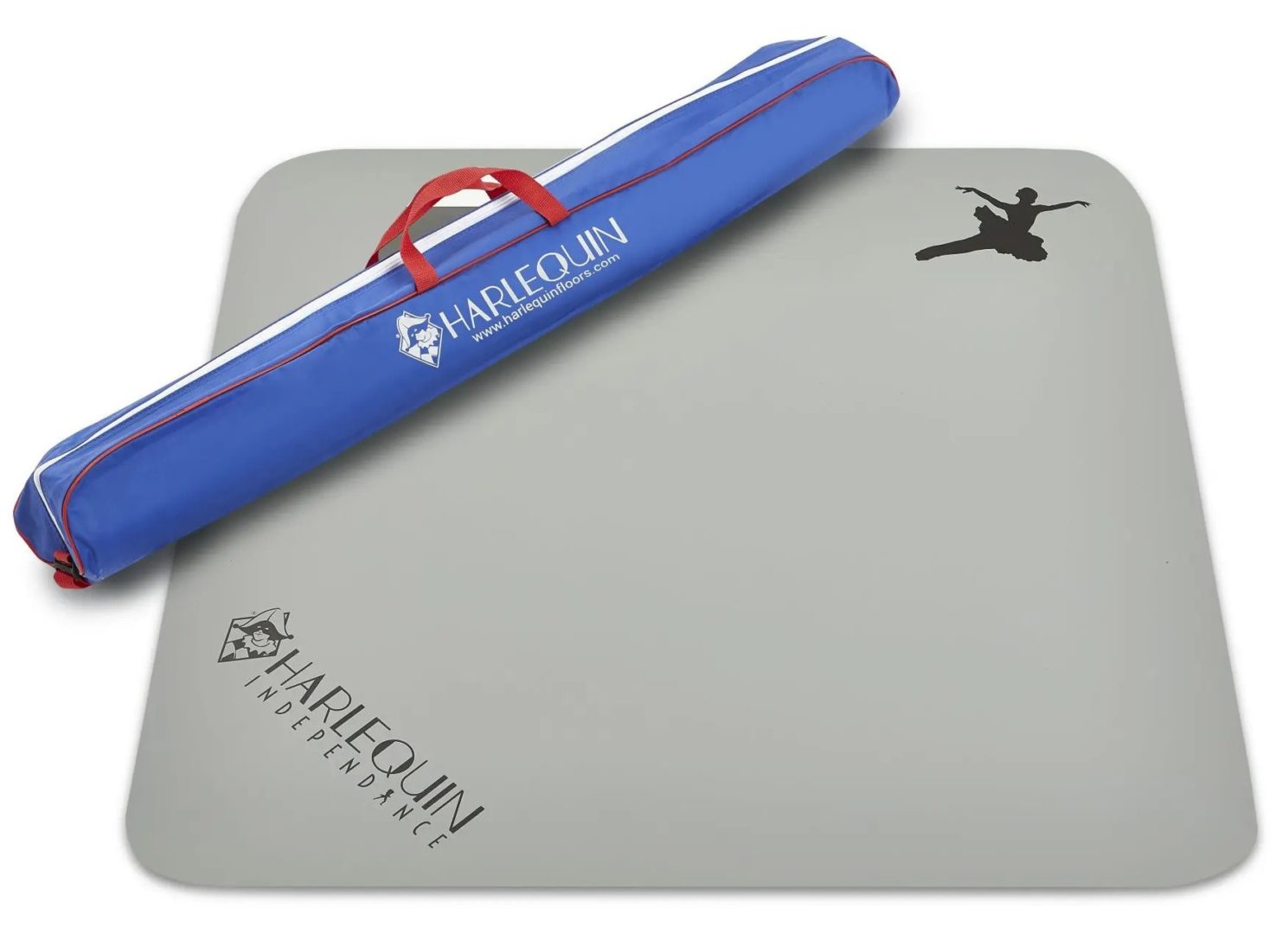
Harlequin dance floors are famous the world over. They are the favored dance floor of the biggest names in dance, including The Royal Ballet, New York City Ballet, Royal Academy of Dance, Riverdance, Glyndebourne Opera House, and many more. And now you can have a little piece of Harlequin at home.
Just like the dance floors that they make for big venues, this portable dance mat is a vinyl dance surface made of PVC. It is slip-resistant, silky-smooth and embossed, and with a good grip. It is so favored because it gives dance performances warmth.
The mat is 1 meter by 1 meter and it can be rolled up and placed into its travel bag so you can use it wherever you want. It can be laid down on any hard surface, except for carpet, and it will help to protect the floor underneath.
Dance mirror
Every good dance studio has a wall of mirrors and this isn’t for vanity. Being able to see yourself clearly while you dance is so important for improving your technique. While we are generally quite good at understanding where our limbs are in space, we aren’t very good at imagining what our body looks like in different positions. A mirror can help you to correct your technique and posture in real-time.
These mirror squares are perfect for a home dance studio. They are made of real glass, not acrylic, so the image won’t get distorted. You get 12 12 inch mirror squares in a pack and they can be stuck directly to your wall. So you can create the perfect mirror wall for your at-home dance studio in no time at all, and at a fraction of the price of buying a giant mirror.
Dance equipment for ballet
Potentially one of the dance styles that you may need the most equipment for is ballet. Ballet is so technical that clever people the world over have designed equipment designed to help you improve your technique so that your ballet skills improve as quickly as possible.
Portable ballet barre
The barre is a key element of ballet practice. Ballet dancers hold onto the barre for support while they practice their movements, including plies, tendus (stretches), grand battement, and degages. Barre work is essential for improving your ballet technique and will be a large part of the practice that you do in class.
If you want to practice your barre work outside of class, it can be tempting to use any household surface, but it will never be quite the same. Investing in a portable ballet barre will ensure that you are able to replicate as closely as possible the barre that you use in class.
This portable ballet barre is completely adjustable and can be used by both children and adults (3.6 feet for children and 5 feet for adults). It is lightweight so is easy to move around and it has a mock woodgrain finish on the metal barre to give it that classic look. It also has a wide and stable base with slip-resistant rubber at the bottom so you don’t need to worry about it slipping out from under you. The curved legs can be used for stretching out your muscles.
Wall-mounted ballet barre
If you would prefer a wall-mounted ballet barre, this is a great option. It has thick steel brackets and sturdy screws so you can be sure that it will stay in place and the bar is powder-coated aluminum so is non-slip. It comes with everything that you need to set it up, including comprehensive instructions and all of the tools that you will be using.
Turning board
One of the key skills of ballet is the pirouette, which is when you spin on one foot with the other raised against your leg. The pirouette can be difficult to master and some of the issues come from a lack of confidence and a fear of falling. This is where turning boards come in. They are used to help you master the movements for your pirouette while making sure that you stay stable.
This turning board by La Esmeralda is perfect for at-home ballet practice, or for practice wherever you are. It has a slick bottom that spins easily on any dance floor but the top is thick rubber padding that easily grips your foot in place. This turning board will help you to get into the rhythm of your pirouette by providing extra support and elasticity so that you can then go on to replicate the movement without the turning board needed.
StretchPRO by Turnboard
When it comes to ballet, foot strength and flexibility are so important. And this is especially the case if you are planning to dance en pointe. Ballet dancers who are trying to obtain the perfect pointe will work extremely hard at improving the strength of the muscles in their foot, as well as increasing the flexibility. Nothing beats practice but you can use a StretchPRO to help along the way.
The StretchPRO is used to improve the shape and height of your arch as well as increasing foot flexibility. It is a silicon foot sleeve attached to a curved length of practice with a dip for your heel to fit into. It comes with two comfort heel cushions so that you don’t hurt your heel. You lay the StretchPRO on the ground and slide your foot into the sleeve which curves your foot. You can adjust the resistance by moving your foot further into the sleeve or pulling it further out.
The StretchPRO also doubles as a handy carry case for any of your other Turnboard equipment so you can take everything you need in one go.
Dance equipment for tap dancing
Tap dancing is pretty unique amongst the popular dance styles because it is both audio and visual. It is amazing to watch but it also serves as a form of musical percussion. So making sure that your sound is just right can be as important as making sure that your dancing looks good.
Tap dancing mat
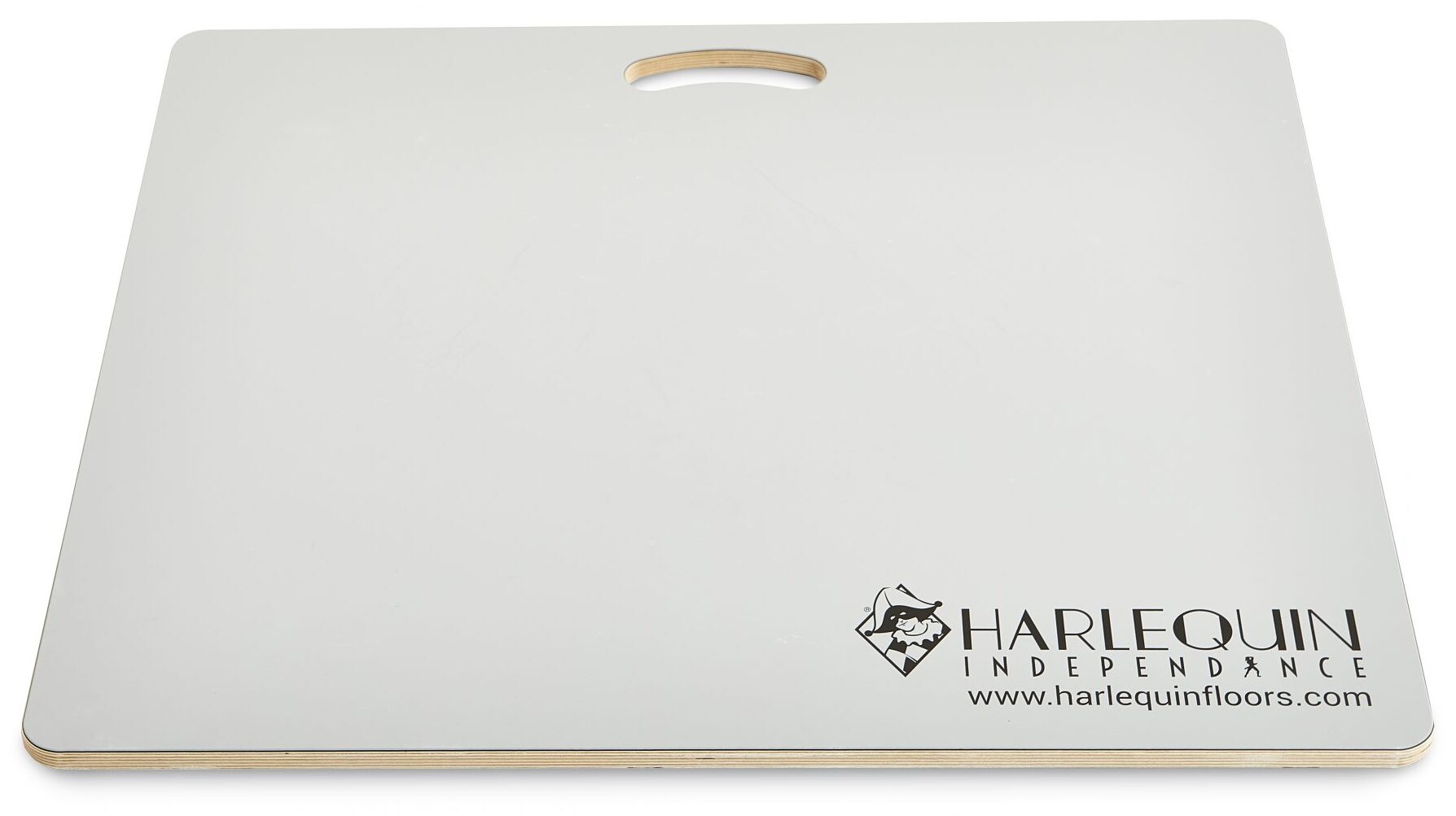
This is another product from Harlequin Floors but it is specifically designed for percussive dance styles. The Tap and Turn Dance Board is 915mm by 800mm and it is made of birch plywood. It’s reversible. On one side, you have the Harlequin slip-resistance dance vinyl but the other side is coated with phenolic resin to give you exceptional sound. It is resistant to scuffs and stress cracking.
This mat is perfect for practicing your tap dancing at home. It is often difficult to replicate the conditions you need to get the perfect sound so having a portable piece of the perfect dance floor can be invaluable!
Dance equipment for acro dance
Acro dance is in a world of its own. It’s a mix between acrobatics and dancing, so not only do you have to master the grace and beauty of dance, but you also have to master the physicality of tumbling that goes along with acrobatics. And this can make it difficult to practice acro dance at home.
Inflatable tumbling mat
If you are looking to practice acro dance at home, investing in an inflatable tumbling mat can be a really wise move. There are few places outside of a gym where you can safely practice your tumbling, but an inflatable tumbling mat works perfectly. This mat comes in a variety of lengths, depending on whether it’s for adults or children and depending on the sorts of tricks you will be needing it for.
The pressure can be adjusted so that it is harder or softer, depending on what you need, and it is made of 500 filament grade PVC tarpaulin. It is also super easy to inflate and deflate, with both taking less than one minute. It is compact when folded and lightweight enough to be portable.
Dance equipment for pole dancing
If you want to practice your pole dancing at home, it’s relatively obvious that you are going to have to get yourself some equipment. It can seem out of the realm of possibility for you to set up your pole dancing space at home, but it is actually really doable. You don’t even need to install a permanent pole if you don’t want to.
Pole dancing pole
The most obvious piece of equipment you are going to need for pole dancing is, well, a pole. This pole dancing pole by SereneLife is perfect for at-home pole dancing practice. It can be set to spinning or static mode, depending on which way you want to practice. It’s made of solid steel and finished with a steel tube which makes it anti-rust. Avoiding rusting is so important with pole dancing poles because rusting leads to tiny sharp edges that can leave you covered in cuts. This pole also has a nearly seamless surface due to its high-precision joints which helps to eliminate another potential source of cuts on your hands, feet, and legs.
You don’t need to drill into your floor or ceiling to fit this pole (although you are able to if you want to). It is adjustable in height from 82 inches up to 108 inches so can fit a variety of ceiling heights. It is super easy to install and to take down (and they provide a helpful manual) so you can move it around if you need to. It has a load capacity of 617 lbs so you never have to worry about it not taking your weight!
To see more dance poles options check out our handy guide to best dance poles we’ve published recently to help you choose the right one for what you need.
Sweaty hands solutions
Everyone gets sweaty hands sometimes. And especially when they are exercising. The problem with sweaty hands when you’re pole dancing, however, is that they can seriously get in the way of your technique and your ability to grip the pole. But you don’t have to suffer through it. There are a few different solutions to eliminating sweaty palms that will keep you on the pole for longer.
Dry Hands
This is a liquid solution that you apply to the palms of your hand. It repels moisture away from your skin so that your hands stay, well, dry. The advantage of Dry Hands over other similar products is that it works perfectly for pole dancing. Other products can sometimes work too well, in the sense that they leave your hands and any surface you touch (such as your pole) sticky. You don’t want this when you’re pole dancing because it will prevent you from being able to execute many of your tricks.
With Dry Hands, there is no sticky residue left behind so it isn’t too grippy on the pole. It’s the perfect middle ground between too wet and too sticky that will let you practice your dancing for as long as you want to.
Lupit Pole Grip Pad
This works in a similar way to Dry Hands but it targets the pole as well as your hands. Rather than it being a liquid solution, the hydrophobic (water-repelling) nano substance is contained within the grip pad. There is a pink side and black side to the pad. You rub the black side along the pole and the pink side on your hands. The slightly different solutions on each side then work together to provide the grip on the pole. One pad is estimated to last you around six months and it’s totally mess-free and easy to carry around with you.
Mighty Grip Gloves
If you have all but given up on your sweaty hands, there is another option – pole dancing gloves. These gloves by Mighty Grip create a layer between your hands and the pole that moisture can’t pass through, so even if your hands do sweat it won’t get transferred to the pole (although it is a good idea to make sure your hands are dry before you put them on, or even have a layer of Dry Hands or something similar). The Tacky Gloves also have a strip of tacky substance which is designed to be used with spinning poles. The tackiness doesn’t last forever but it does provide a strong grip for you to practice your moves.
Crash mat for pole dancing
Even with all of this help with your grip, there is still a chance that you will fall. It’s the reality of engaging in a high-energy physical activity that you are probably going to fall over at some point. And, with pole dancing, you are going to be moving quickly and sometimes using unfamiliar grips and positions. So making sure that you have a soft landing for when (or if) you do fall can be a very good idea.
This crash mat was specifically designed for pole dancing. It is in four equally sized quadrants with a hole in the center that will fit standard pole bases. So there will be no gap at all that you could potentially slip through when you fall. It is filled with high-density EPE foam and covered with PVC leather and it provides an effective injury-preventative surface. The crash mat can be folded up to be the size of a single quadrant so it can be stored away when not in use.
Dance equipment for aerial silks
Aerial silks is an amazing dance style to learn. It is beautiful and also incredibly physical. The level of skill and strength that you will be able to achieve by learning aerial silks is second to none. But, again, this seems like a dance style that it would be impossible to practice outside of the gym. This is not the case. You can definitely pick up the equipment that you need to be able to practice aerial silks at home.
Aerial silks beginner kit
This is a complete aerial silks beginner kit containing everything you will need to set up your aerial silks at home. It contains:
- 9 yards of silk made of 40 denier Tricot
- descender/rescue figure 8 which is mountaineering-grade
- 2 daisy chains
- 2 o-slings
- 2 carabiners
These silks can take up to 1800 lbs in weight and they are soft and easy to grip with a low-to-medium stretch weave (making them suitable for both beginners and experienced aerial silks performers). You can have these silks with a one-point set up for aerial silks or a two-point set up for aerial yoga and they will fit ceilings between 8 and 13 feet high.
You get an extra o-sling so that you can hang the silks on an exposed beam/tree branch/etc. The set-up is easy and the set comes with clear pictorial instructions.
The bottom line
Learning to dance is incredibly rewarding, challenging, and exciting. And it can be frustrating to have to limit your dance practice to studio-time only, simply because you lack the equipment to properly practice at home. But this doesn’t have to be the case. You can get dance equipment for just about every dance style that allows you to do all of the practice you need in your own home and in your own time. So you don’t need to be sat at home twitching your thumbs and waiting until you can head out to practice again. The right dance equipment can also help you to improve your training and technique so that you perform better when you need to.
